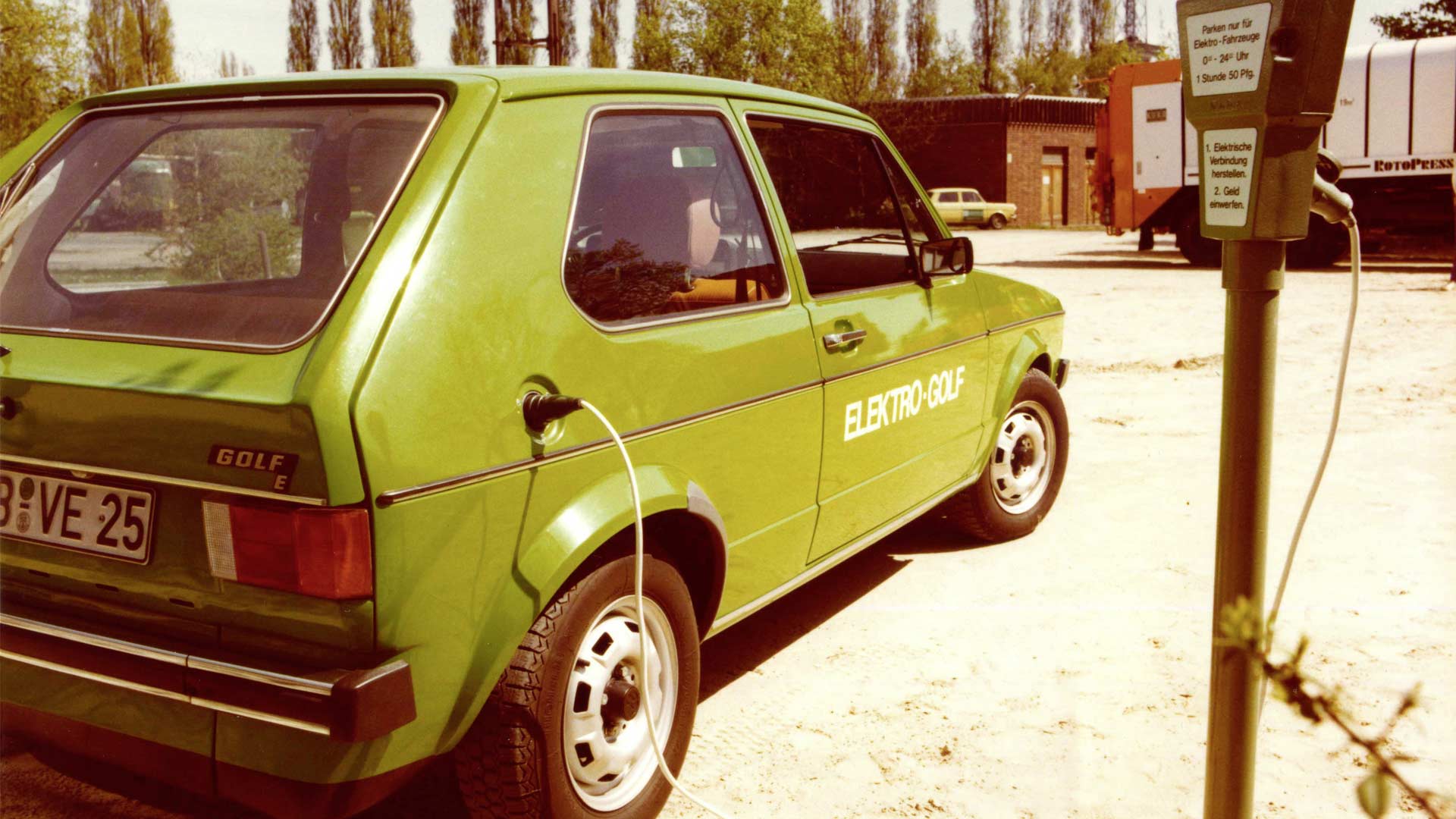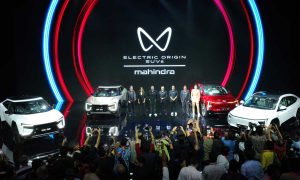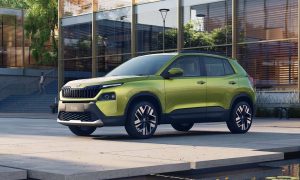While it does appear that a lot of investment is being made on electric mobility only recently, some manufacturers have experimented with making EVs much earlier. In fact, the series production of electric vehicles dates back to the 19th century.
As for Volkswagen, the story dates back to 1970s with the T2 Elektro Transporter—a van. The 1972 project was developed in association with Bosch, RWE and Varta. It was powered by a DC motor fitted in the rear of the vehicle and delivered a continuous power rating of 16 kW (22 metric hp). The floor-mounted lead batteries weighed 850 kg (1,874 lbs)—more than a Beetle at the time.
Due to the necessary reinforcement given to the floor assembly and chassis, the Transporter weighed in at a good 2.2 tons, VW remembers. A total of 120 units were produced.
1976 Elektro Golf I
Then comes the electric version of the Golf (featured photo). The 75 hp petrol engine was replaced with a DC electric motor mounted on the production 4-speed gearbox. An on-board charger made it possible to charge the 16.6-volt lead batteries via a normal 220-volt plug socket, which took around 12 hours. The car remained a prototype.

Golf I CitySTROMer
An improvement over the Elektro Golf I. Only 20 units were initially built and used by RWE employees. The car had room for four people and weighed in at one and a half tons with its lead batteries. Its range was around 60 km (37 mi). A total of 25 units were built as part of a small-scale production run.
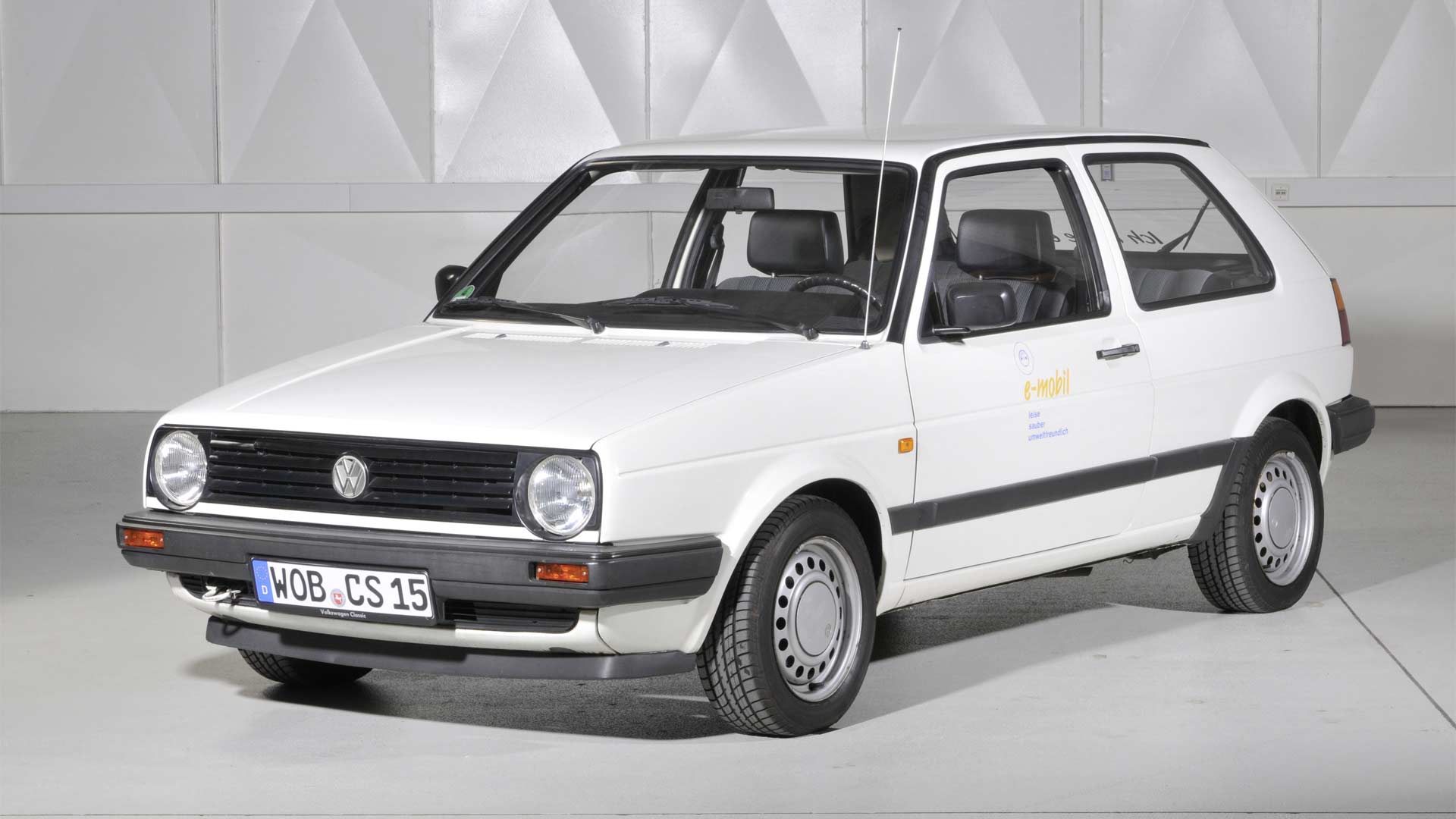
Golf II CitySTROMer
The second chapter of CitySTROMer was unveiled in 1985. Here, the charging cable was located behind a small flap in the radiator grille. A total of 70 units were produced and were initially reserved for testing purposes. After gaining enough insights and confidence, the cars were subsequently sold to private individuals.
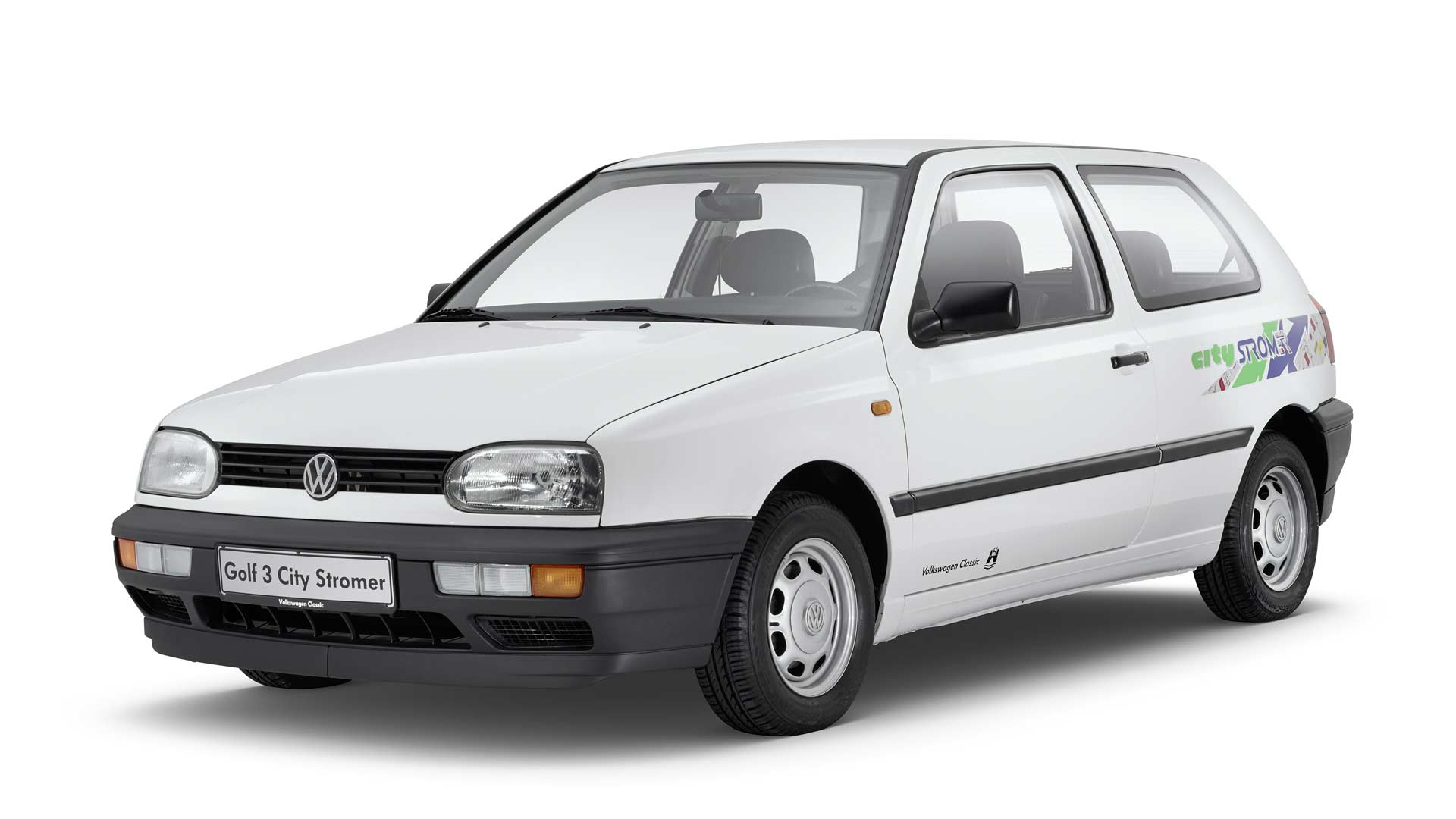
Golf III CitySTROMer
That’s right. There was the third chapter too. This one was built in collaboration with Siemens and was available to purchase for the first time in 1993. A total of 120 cars were built until 1996. Ranges of up to 90 km (56 mi) were possible on city journeys at a constant speed of 50 km/h (31 mph)—a remarkable figure back then, reckons VW.
It apparently took one and a half hours to charge the battery to 80%. The car also had brake energy recuperation.
Golf VI Blue-e-Motion
Fast forward to 2010, VW unveils the Golf Blue-e-Motion at the Berlin e-mobility summit. It was based on the 6th generation Golf, and had a 115 hp motor which offered about 82 hp of continuous power and 270 Nm (199 lb-ft) of torque. The lithium-ion battery had a capacity of 26.5 kWh. Brake energy recuperation, three different driving profiles for controlling the vehicle’s dynamism and range, and a quick-charging system were part of the features list. However, the Golf Blue-e-Motion remained a prototype.

e-Golf
Based on the 7th generation Golf, the e-Golf was unveiled in 2013 as the first mass-produced Volkswagen model with a purely electric drive system. The 2017 model has 134 hp electric motor which produces around 290 Nm (214 lb-ft) of torque. The 35.8 kWh lithium-ion battery pack is good for a range of up to 125 miles (EPA-estimated) or about 201 km. The car offers all the latest technology, including Driver Assistance features such as Adaptive Cruise Control (ACC).
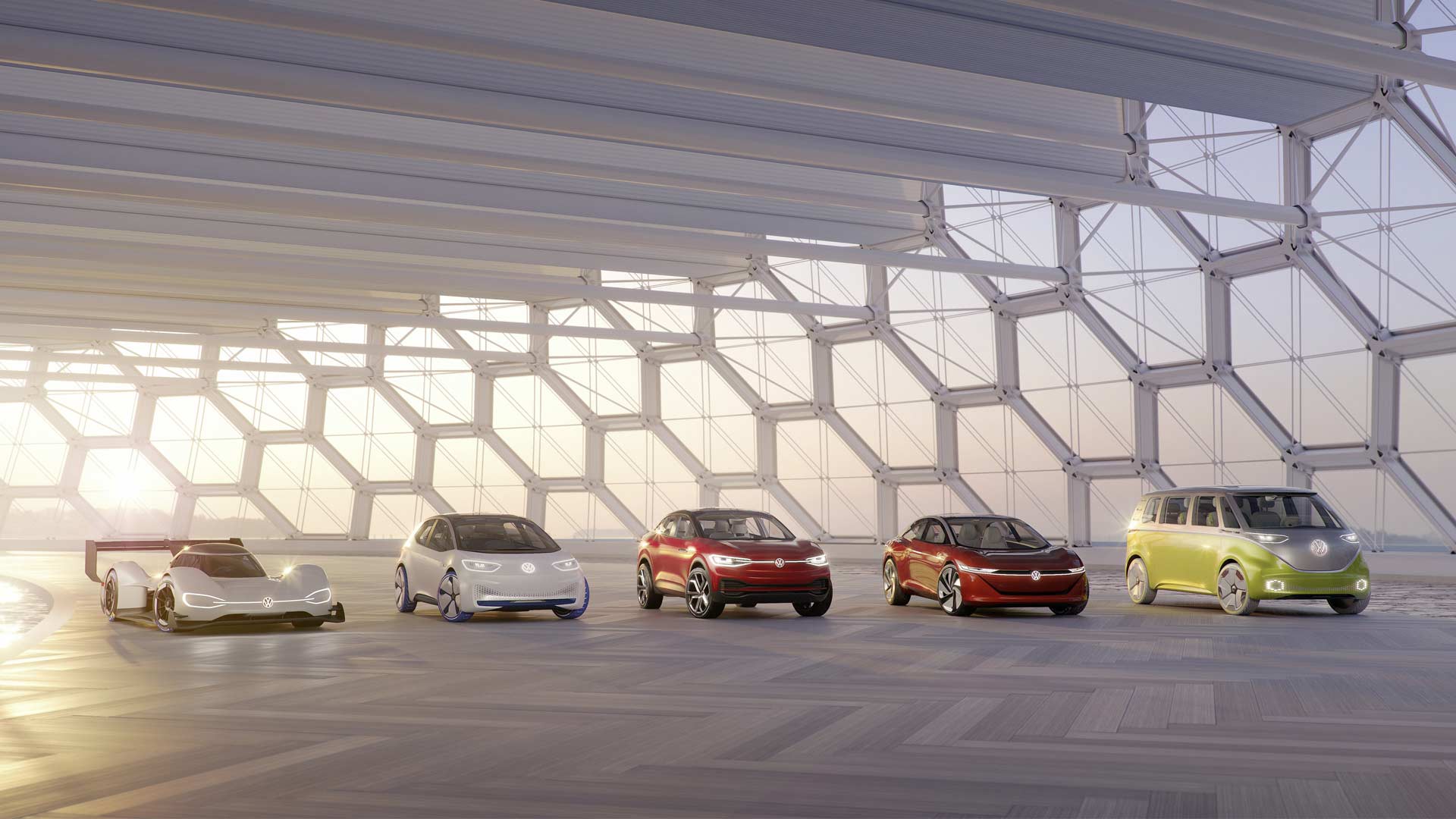 L-R: I.D. R Pikes Peak, I.D. hatchback, I.D. Crozz SUV, I.D. Vizzion saloon and the I.D. BUZZ van
L-R: I.D. R Pikes Peak, I.D. hatchback, I.D. Crozz SUV, I.D. Vizzion saloon and the I.D. BUZZ van
Come 2020, Volkswagen will offer the I.D. family of electric vehicles. Read more on the topic here.
Also, read: Long before Nissan Leaf, there was Tama electric car

Leave a Reply
Note: Comments that are unrelated to the post above get automatically filtered into the trash bin.
